Hexagons - polygons with 6 sides
Categories: gcse geometry
Level:

A hexagon is a flat shape with 6 straight sides.
Regular and irregular hexagons
A regular hexagon is a 6-sided shape where every side is the same length and every corner has the same angle. All regular hexagons have the same shape, like this:
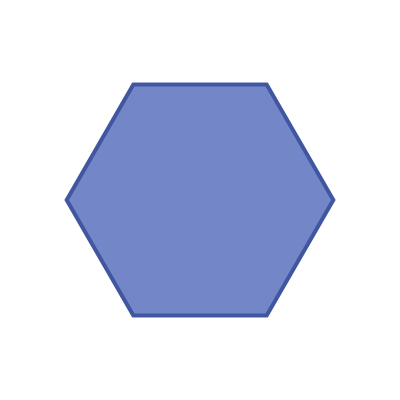
An irregular hexagon is a 6 sides shape where not every side and angle are equal. There are many different irregular hexagon shapes, here is an example:
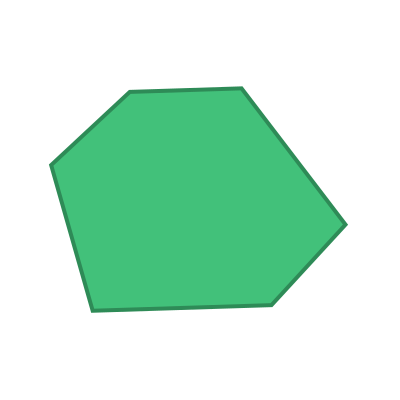
Name
The name hexagon is a combination of the words hex (Greek meaning six) and gonia (Greek meaning corner).
Hexagons are sometimes called 6-gons.
Interior angles
The interior angles of a hexagon are shown here:
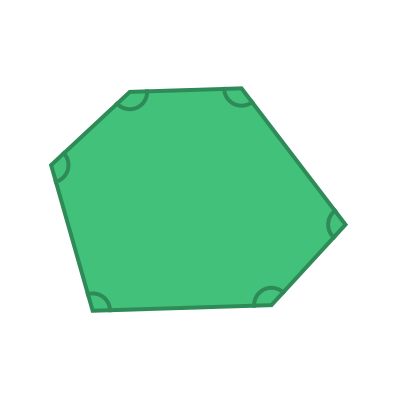
The sum of these 6 angles is given by the formula:
sum of interior angles = (n - 2) x 180
Where n is the number of sides. In this case, the number of sides n is 6, so the sum of the interior angles is:
(6 - 2) x 180 = 720 degrees
For a regular hexagon, all the interior angles are equal:
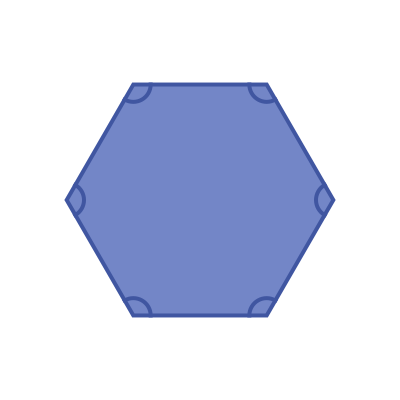
This means that the interior angle of a regular hexagon is:
720 / 6 = 120 degrees
Exterior angles
The exterior angles of a hexagon are shown here:
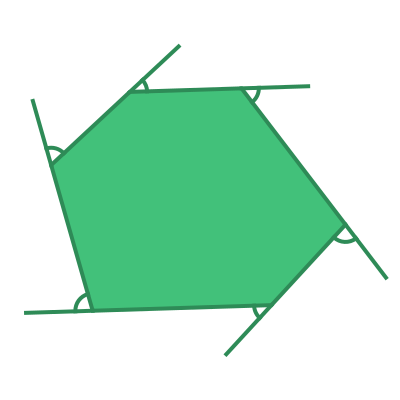
The sum of the exterior angles of any polygon is 360 degrees.
For a regular hexagon, all the interior angles are equal:
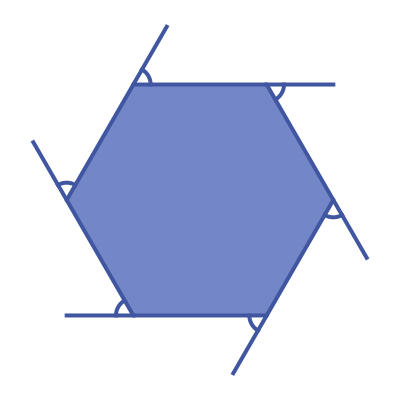
This means that the exterior angle of a regular hexagon is:
360 / 6 = 60 degrees
Symmetry of regular hexagons
A regular hexagon has 6 lines of symmetry. This means that it can be reflected over each of the 6 grey lines shown here:
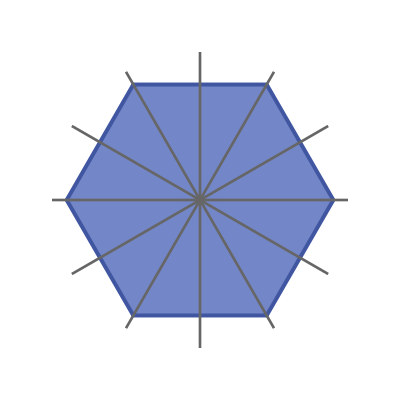
A regular hexagon has rotational symmetry of order 6. This means that if it rotated about its centre by a 6th of a full turn, it will map onto itself:
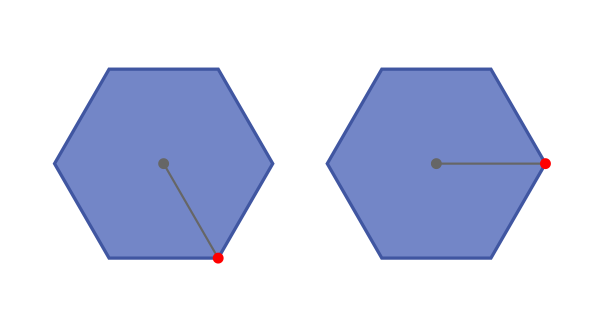
Real life examples
Regular hexagons tessellate, so it is a popular shape for floor tiles. The only other regular polygons that tessellate are squares and equilateral triangles.
Related articles
- Regular polygons
- Interior and exterior angles of a polygon
- Triangles
- Quadrilaterals
- Quadrilateral family tree
- Pentagons - polygons with 5 sides
- Heptagons - polygons with 7 sides
- Octagons - polygons with 8 sides
- Nonagons - polygons with 9 sides
- Decagons - polygons with 10 sides
- Hendecagons - polygons with 11 sides
- Dodecagons - polygons with 12 sides
- n-gons - polygons with any number of sides
- Other types of polygon
- Star polygons
Join the GraphicMaths Newsletter
Sign up using this form to receive an email when new content is added to the graphpicmaths or pythoninformer websites:

Popular tags
adder adjacency matrix alu and gate angle answers area argand diagram binary maths cardioid cartesian equation chain rule chord circle cofactor combinations complex modulus complex numbers complex polygon complex power complex root cosh cosine cosine rule countable cpu cube decagon demorgans law derivative determinant diagonal directrix dodecagon e eigenvalue eigenvector ellipse equilateral triangle erf function euclid euler eulers formula eulers identity exercises exponent exponential exterior angle first principles flip-flop focus gabriels horn galileo gamma function gaussian distribution gradient graph hendecagon heptagon heron hexagon hilbert horizontal hyperbola hyperbolic function hyperbolic functions infinity integration integration by parts integration by substitution interior angle inverse function inverse hyperbolic function inverse matrix irrational irrational number irregular polygon isomorphic graph isosceles trapezium isosceles triangle kite koch curve l system lhopitals rule limit line integral locus logarithm maclaurin series major axis matrix matrix algebra mean minor axis n choose r nand gate net newton raphson method nonagon nor gate normal normal distribution not gate octagon or gate parabola parallelogram parametric equation pentagon perimeter permutation matrix permutations pi pi function polar coordinates polynomial power probability probability distribution product rule proof pythagoras proof quadrilateral questions quotient rule radians radius rectangle regular polygon rhombus root sech segment set set-reset flip-flop simpsons rule sine sine rule sinh slope sloping lines solving equations solving triangles square square root squeeze theorem standard curves standard deviation star polygon statistics straight line graphs surface of revolution symmetry tangent tanh transformation transformations translation trapezium triangle turtle graphics uncountable variance vertical volume volume of revolution xnor gate xor gate
